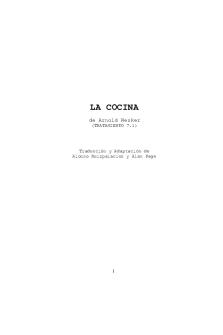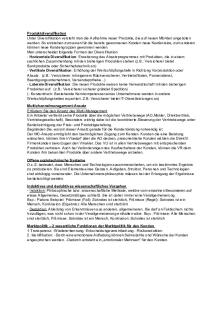Anerobic lab stimulation-Sierra Arnold PDF

| Title | Anerobic lab stimulation-Sierra Arnold |
|---|---|
| Author | Sierra Arnold |
| Course | Test and Measurements |
| Institution | University of the Cumberlands |
| Pages | 5 |
| File Size | 123.5 KB |
| File Type | |
| Total Downloads | 56 |
| Total Views | 161 |
Summary
lab report from in class anerobic lab...
Description
Sierra Arnold Anaerobic Fitness Lab Stimulation November 18th 2020
Introduction Anaerobic fitness is used in a lot of activities without being aware that it is used. Anaerobic fitness happens in exercises lasting between 10 and 120 seconds (Haff and Dumke). To define anaerobic fitness, it is training without oxygen. Anaerobic fitness assessments are an important part of overall assessments of physical fitness. Testing anaerobic fitness can be done in both athletes and clinical clients. It can also be seen that anaerobic fitness can help in one’s activities of daily living (Haff and Dumke). There are many anaerobic power and capacity test that can be used to test ones overall anaerobic fitness. These tests can include sprinting performance to test horizontal power and jumping tests to determine vertical power. Through this lab stimulation a participant’s vertical power was tested through jumping along with their horizontal power tested through sprints. Materials and Methods The materials used in this lab stimulation included: four cones, stopwatch, measuring tape, flat surface, a Vertec and a lab data sheet. The four cones, stopwatch, and measuring tape were all used in the Sprinting Performance Test. The measuring tape was used in order to measure out the length between the cones to make sure they were at equal distance. The stopwatch was needed in order to time the participants trials. The flat surface was needed for both tests used in this lab. The Vertec was used for the Vertical Jump Test, but this equipment can be substituted out for a wall to measure vertical jump on. To conduct the Sprint test you start by setting up the cones in a T-shape with the back cone being 10 yards from the center one, with one on each side of the center one being 5 yards
from it. The goal of this test is to complete the course as quickly as possible. The participant starts at the back cone furthest away and sprints forward touching the center cone with their right hand, then sprinting laterally to the other cone, back to the center, laterally the other direction, back to the center, and then back peddling back to the starting cone. Once the participant returns to the starting cone the time is stopped. The client’s feet cannot cross over at any point during the test or the trial will not count. The time is then recorded, and the test is repeated two more times. The Vertical Jump test was conducted in two different ways. The first way was the countermovement vertical jump. Before beginning to jump the participants reach height is recorded, to do this the participant reaches as high as possible with feet flat on the floor and the reach height is measured. The subject then prepares to jump. The jump is performed by having feet shoulder width apart, dipping the hips while swinging the arms prior to pushing off the ground. The subject then reaches for the highest point possible. The test is done three times with a 2-minute rest between each with heights recorded. Then the reach height is subtracted from the highest vertical jump height. The next vertical jump test performed is the Static Vertical Jump test. This test is similar to the countermovement test however, the subject squats with thighs parallel to the floor holding this squat for three second before exploding into their jump. These tests are also repeated two more times with a rest of two minutes between them. Results Table 1.1: T-test results compared to male T-test norms Norms: Excellent 9.5 Good 9.51-10.50 Average 10.51-11.5 Poor...
Similar Free PDFs

GRISSE ARNOLD
- 2 Pages

Arnold Wesker-La Cocina
- 64 Pages

WA7 - Arnold Palmer Hospital
- 8 Pages

CASO HOSPITAL ARNOLD PALMER
- 4 Pages

Arnold Hauser Histdel Arte 1
- 33 Pages

Magda arnold emozioni
- 3 Pages

Ashburn anstalt v arnold 2011
- 1 Pages

BWL 1 Arnold - BWL 1
- 4 Pages

Dover Beach by Matthew Arnold
- 3 Pages
Popular Institutions
- Tinajero National High School - Annex
- Politeknik Caltex Riau
- Yokohama City University
- SGT University
- University of Al-Qadisiyah
- Divine Word College of Vigan
- Techniek College Rotterdam
- Universidade de Santiago
- Universiti Teknologi MARA Cawangan Johor Kampus Pasir Gudang
- Poltekkes Kemenkes Yogyakarta
- Baguio City National High School
- Colegio san marcos
- preparatoria uno
- Centro de Bachillerato Tecnológico Industrial y de Servicios No. 107
- Dalian Maritime University
- Quang Trung Secondary School
- Colegio Tecnológico en Informática
- Corporación Regional de Educación Superior
- Grupo CEDVA
- Dar Al Uloom University
- Centro de Estudios Preuniversitarios de la Universidad Nacional de Ingeniería
- 上智大学
- Aakash International School, Nuna Majara
- San Felipe Neri Catholic School
- Kang Chiao International School - New Taipei City
- Misamis Occidental National High School
- Institución Educativa Escuela Normal Juan Ladrilleros
- Kolehiyo ng Pantukan
- Batanes State College
- Instituto Continental
- Sekolah Menengah Kejuruan Kesehatan Kaltara (Tarakan)
- Colegio de La Inmaculada Concepcion - Cebu






